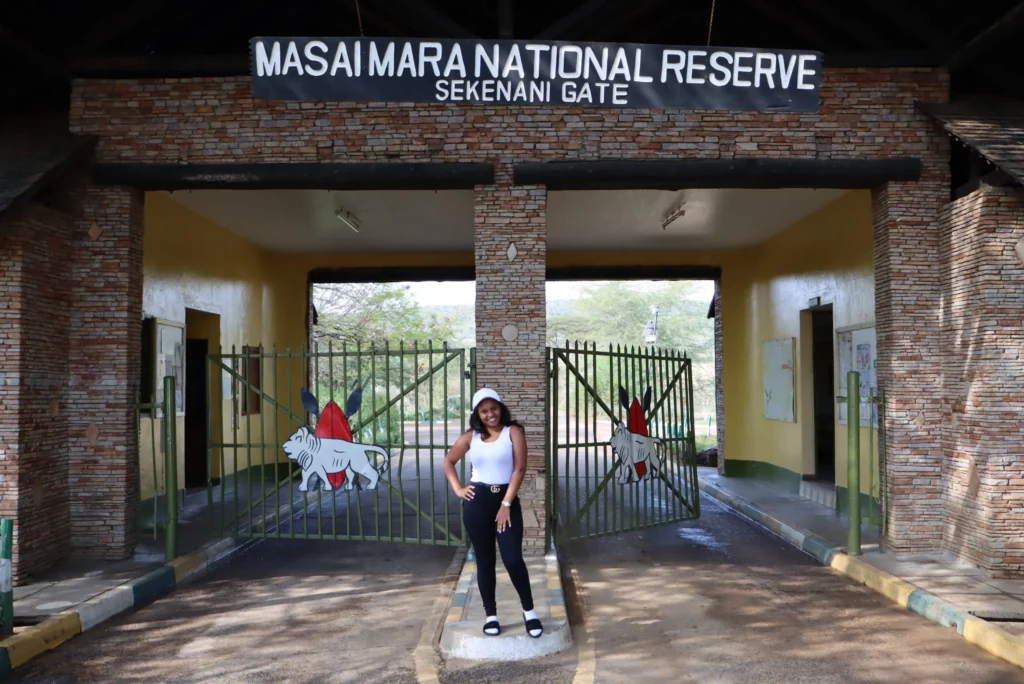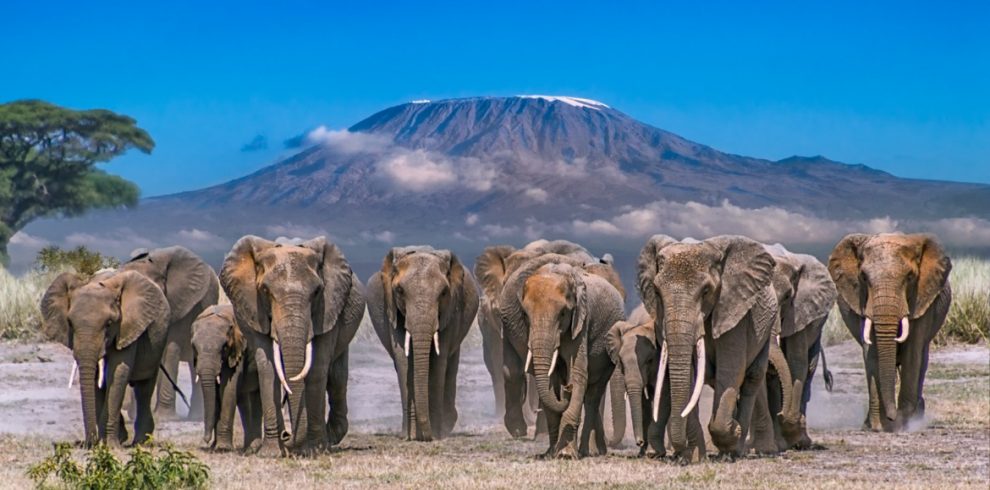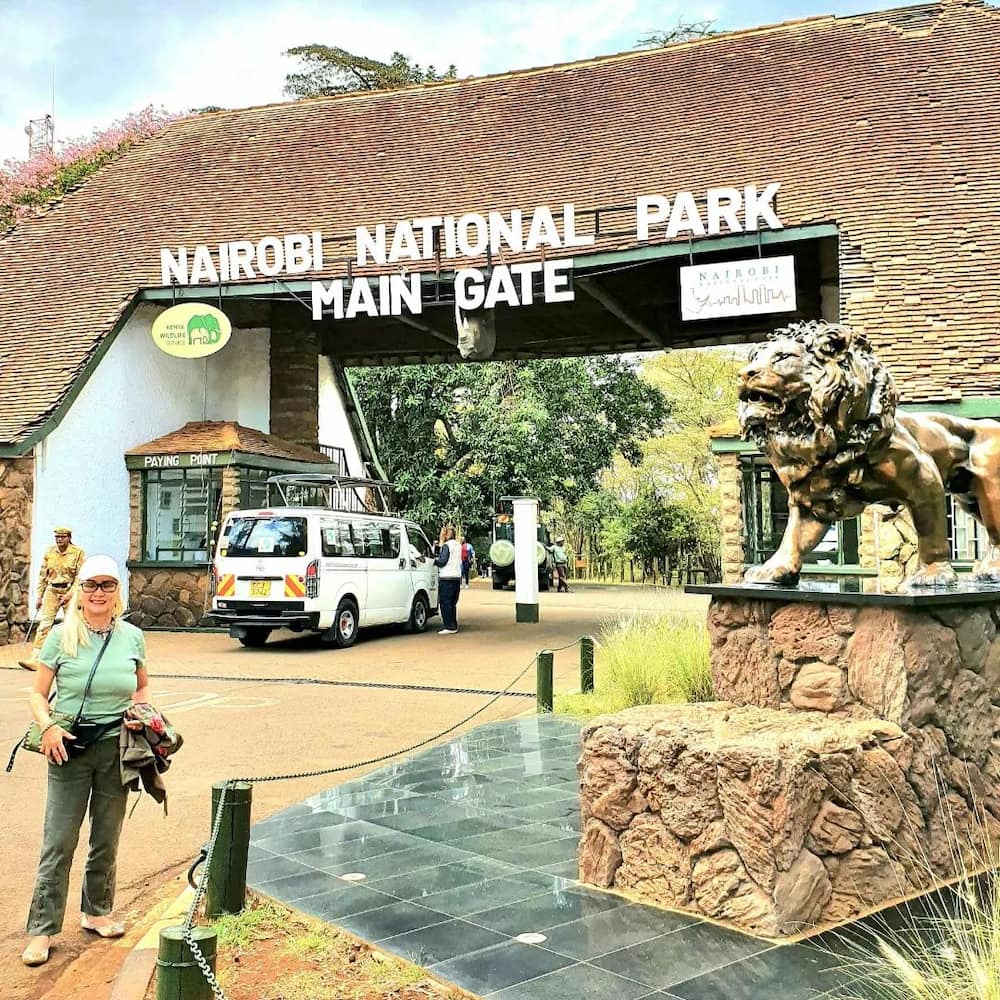Maasai Mara National Reserve : Situated 224 kilometres east of Nairobi in Narok County, in the southwest of Kenya’s Great Rift Valley, is the well-known wildlife safari destination, Maasai Mara National Reserve. Its most well-known features are the Great Wildebeest Migration and the Big Five (elephants, buffaloes, rhinos, lions, and leopards).
The two principal rivers that flow through the 1,510 square kilometre Maasai Mara to the north are the Talek and Mara rivers. The escarpments of the East African Rift Valley Esiot Escarpment, which extend 5600 kilometres from Ethiopia’s Red Sea through Kenya, Tanzania, Malawi, and Mozambique, are the reserve’s principal features. There are big acacia trees to the southeast of the reserve.
Using the Maasai term “Mara,” which refers to the grasslands, savanna, and shrubs that are predominant in Maasai Mara national reserve, honours these local ancestral people who once lived in the area currently occupied by the reserve. The Maasai people refer to this park as “Mara.”
In 1961, the reserve was first established as a 520 square kilometre animal sanctuary. Later, the sanctuary’s boundaries were expanded to 1821 square kilometres to establish a game reserve. The Maasai Mara reserve, which covered 159 square kilometres, was declared a national reserve by the local people; the remaining reserve area was likewise declared a national reserve in 1974. Moreover, the 1,510 square kilometre remaining part of the reserve—which had been reduced to 162 square kilometer—included the three ranches referred to as Sekenani, Musiara, and Mara Triangle.
Along with many other wildlife species, the reserve is home to lions, elephants, buffaloes, zebras, cheetahs, rhinos, crocodiles, wild African dogs, elands, giraffes, gazelles, wildebeests, crocodiles, and spotted hyenas.
In Kenya, the Maasai Mara National Reserve is an excellent spot for bird watching. Approximately 470 different bird species can be found there, such as the African finfoot, African wood owl, Denham’s bustard, Ayres’s hawk eagle, and Abdim’s stork. Grey-crested helmet-shrike, enormous kingfisher, and grey-penduline tit Hildebrandt was the star of several animals, including the ostrich, the cisticola, the Ross’s turaco, the Rosy-throated longclaw stork with a saddle bill, the ostrich, the purple-clad grenadier, the red-faced tit, the Rufous-bellied heron, and the Rufous-throated wryneck. Two of these are the Yellow-mantled Widowbird and the Yellow-throated Sandgrouse. Other species include the Silverbird Southern ground hornbill, Temminck’s courser, Tabora cisticola, Cisticola trilling, Usambiro barbet, White-bellied absent-minded bird, woolly-necked stork, and Swahili sparrow.
Safari activities to do in Maasai Mara national reserve
Game viewing
Visitors can see a wide range of wildlife, including lions, elephants, buffaloes, zebras, cheetahs, rhinos, crocodiles, wild African dogs, and elands, during morning and afternoon game drives in Maasai Mara. It is commonly known that the reserve is among the best places on Earth for safaris to view wildlife. Observing the annual great wildebeest migration, which involves millions of wildebeests moving from the Serengeti national park into the plains of the Maasai Mara national reserve with the help of zebras, elands, and gazelles, is another opportunity provided by game viewing in the Maasai Mara national reserve. July through September is the best time to witness the massive wildebeest migration.
Bird watching
The reserve is a top pick for Kenya birding safaris, offering over 470 different bird species, including 60 migratory species and a large number of raptors. The reserve is therefore a birdwatcher’s paradise. Birdwatchers can see a wide range of species in the Maasai Mara National Reserve, including Ayres’s hawk eagle, African finfoot, African wood owl, Cinnamon-breasted bunting, Denham’s bustard, and Abdim’s stork. massive kingfisher, grey-crested shrunken helmet, Hildebrandt’s starling, Jackson’s widowbird, and the grey penduline tit Saddle-billed stork, Secretary Bird Silverbird, Temminck’s courser, Tabora cisticola, Trilling cisticola, Usambiro barbet, White-bellied absent-minded bird, Swahili sparrow, Rufous-bellied heron, Schaflow’s turaco, tit with a red face, Ross’s turaco, cisticola, sluggish purple grenadier, and Rufous-bellied heron These include the Yellow-throated Sandgrouse, the Woolly-necked Stork, and the Yellow-mantled Widowbird.
Watching the great wildebeest migration
The Serengeti ecosystem, which includes both Maasai Mara and Serengeti National Park, and the Great Wildebeest Migration are the two protected areas in the world hosting the most amazing wildlife migration that has been documented to date. Over 1.5 million wildebeests, hundreds of thousands of zebras, elands, and Thomson and Grant’s gazelles travel between the two protected areas during the great wildebeest migration in search of green pasture and water.
Watching the great wildebeest migration
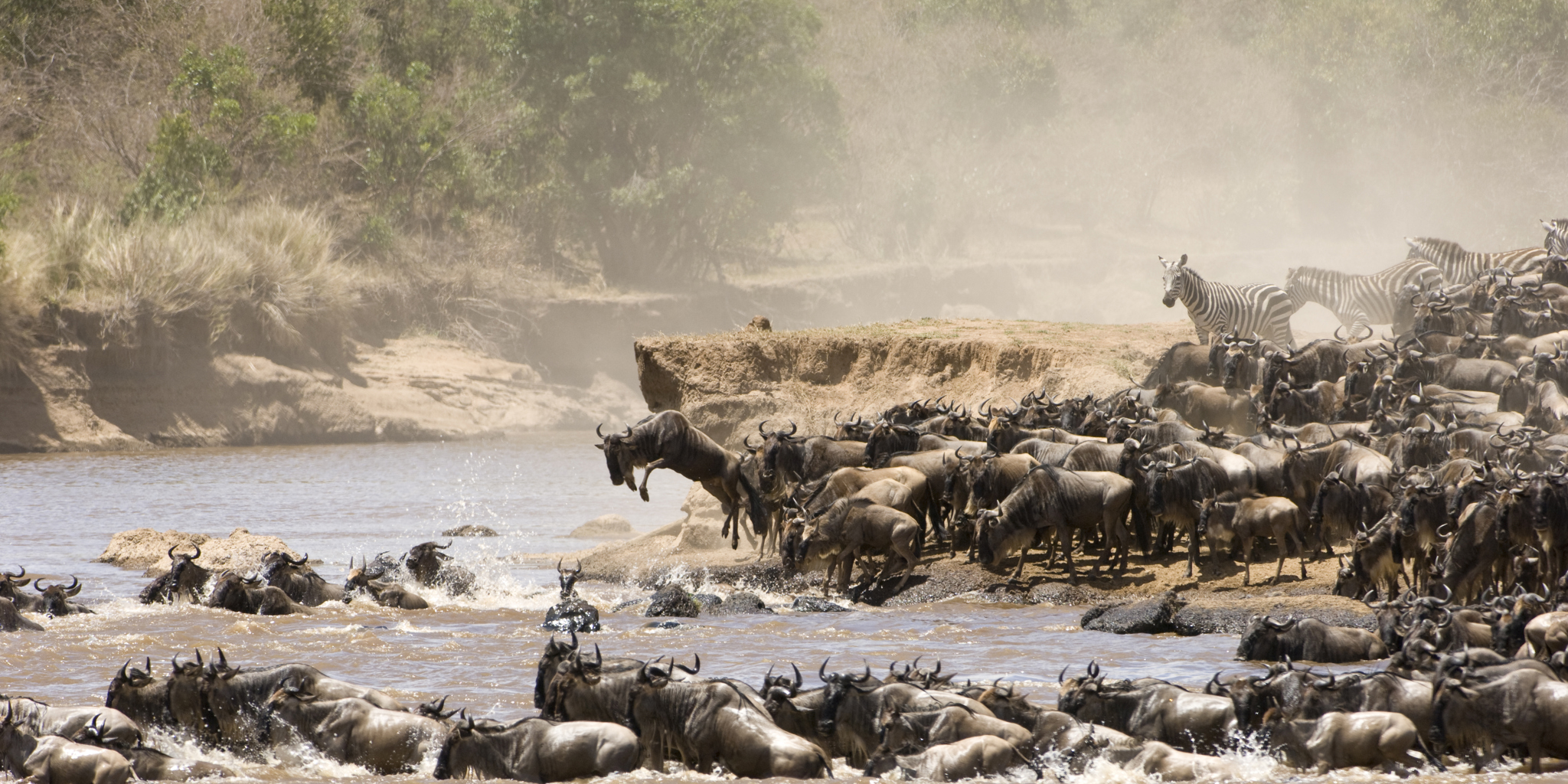
Witnessing the magnificent wildebeest migration is an unforgettable wildlife experience that you must not miss. The centre of the migration in the Maasai Mara National Reserve is the Mara River Crossing, where the migrating animals fight crocodiles in the river and predators on the banks as they cross over to the Mara plains. When the animals return to the south plains in September, late October and early November, and late July and early August are the best times to witness the great wildebeest migration and the river crossing in the Maasai Mara National Reserve.
Cultural walks
Visitors have the chance to engage with the Maasai people and get a glimpse of their extraordinary customs, traditions, and cultural norms through the Maasai Mara cultural walks. They offer an amazing perspective of Kenya. The Maasai people are pastoralists, and their main source of income is cattle raising. You can learn more about the culture and customs of the Maasai people by going to the communities that border the reserve, seeing their circular homes, called “The Bomas,” which are constructed from local materials, and interacting with the locals. You can also see regional theatre and dance productions at schools.
Walking safaris
Walking safaris are the best kind of safari experience in Kenya for nature enthusiasts. They can be found in the Maasai Mara national reserve, where knowledgeable, armed game rangers keep an eye on them in case of an animal attack. The best location for a walking safari in Maasai Mara is the stunning and animal-filled Naboisho Conservancy. Along with the varied flora and fauna, you will be able to witness the savannah’s rolling plains.
Hot air balloon
As an exciting alternative to game driving, which allows you to see animals through the open windows of your car, hot air ballooning provides breathtaking views of the endless grasslands that make up the Masai Mara. Huge herds of animals, including African elephants, zebras, lions, leopards, wildebeest, and many more, can be seen from the air during a hot air balloon safari.
Hot air balloon safaris take place in an inflated balloon that is suspended above the reserve’s plains; the air balloon’s movement is mostly dictated by the wind’s direction. In a hot air balloon, only seventeen tourists are permitted per session.
How to get to Maasai Mara national reserve
The reserve can be accessed through a number of locations in Kenya, including Sand River Gate, Ololaomutiek Gate, Oloololo Gate, Musiara Gate, Sekenani Gate, and Talek Gate. Kenya is a reasonably accessible African safari destination. One can reach the Maasai Mara National Reserve by air or by road.
By road: From Nairobi, one of Kenya’s most visited tourist sites, it takes about three hours to get through Sekenani gate and Narok town in the Masai Mara National Reserve. While there are other private and public transportation options, using a 4X4 vehicle is strongly advised when travelling by road.
By air: Wilson Airport in Nairobi, Samburu Airport, Lewa Downs, Nanyuki, Mombasa, and Diani Airport are just a few of the domestic chartered airports that serve the Maasai Mara National Reserve. The airstrips that serve the reserve include Keekorok, Cottars, Mara North, Musiara, Ngerende, Olare Orok, Ol Kiombo, Ol Seki, Serena, and Siani fields.
AirKenya Express, SafariLink Aviation Limited, East African Safari Air Express, Fly540, Bluebird Aviation, Jambojet, Mombasa Air Safari, and many more aircraft companies offer domestic chartered flights to the Maasai Mara national reserve.
Accommodation in Maasai Mara
When on safari in the Maasai Mara National Reserve, there are many wonderful and cosy safari lodges and camps to choose from. These lodging options (safari lodges and camps) include the Elephant Pepper Camp, Mara Bush Camp, Kikwa Tembo Tented Camp, Mara Serena Safari Lodge, The Mara Suni Lodge, Masai Mara Engai Wilderness Lodge, and many more.
